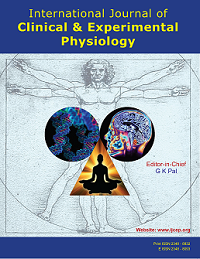Exercise-Induced Hypertension: A Review of Plausible Mechanisms and Clinical Significance
Abstract
This literature review is aimed to present the effect of exercise on blood pressure. More specifically it addresses the pathophysiological mechanisms as to how exaggerated blood pressure is occurring following experimental exercise and its predictive power for future new onset hypertension. Literatures searched using key words; ‘Cardiovascular diseases’, ‘Exercise’, ‘hypertension’, ‘Hypertensive Response to Exercise (HRE)’, ‘Hemodynamic Changes’ from search engines including PubMed, Cochrane Database and Google scholar. Blood pressure (BP) is the lateral pressure exerted on the wall of elastic arteries and it is critical for distribution of blood to metabolic tissues in need of oxygen and nutrients. Elevated BP or hypertension is often considered as a silent killer and is a risk factor for cardiac, neuronal and renal insults. A systolic BP of ≥ 210mmHg in males and ≥ 190 mmHg in females to exercise testing is defined the term exercise-induced hypertension. An exaggerated increase in BP to exercise is a good predictor for the incidence of hypertension in other wise normotensive individuals. A hyperactivity of the sympathetic nervous system along with activation of renin-angiotensin system, a pre-existed endothelial dysfunction associated with a defect in release of nitric oxide, arterial stiffness and concurrent metabolic syndrome are the putative factors involved in exaggerated BP response to exercise. An exaggerated BP response to exercise in normotensives is a predictor for new onset hypertension and target organ damage. Therefore, early detection is paramount to prevent the complication and economic cost of hypertension.

Copyright (c) 2020 Phcog.Net

This work is licensed under a Creative Commons Attribution-NonCommercial-NoDerivatives 4.0 International License.





